There’s an undeniable magic to waking up in the Australian bush. For anyone visiting this extraordinary country, I wholeheartedly recommend camping – and the reason is simple: unparalleled wildlife encounters. No four walls can replicate the thrill of unzipping your tent to find a mob of wild kangaroos grazing peacefully just meters away. It’s a truly iconic and heartwarming moment that you’ll cherish for a lifetime.
As locals calling this ‘down under’ country home, my family and I are lucky enough to experience these moments quite regularly, and I can tell you, they never lose their magic. Can seeing a joey peeking out of its mum’s pouch as you’re making breakfast be anything but utterly delightful?
So, how common is it to see wild kangaroos?
While kangaroos are widespread across New South Wales, and you’ll often encounter them if you spend time in the Aussie bush (though generally not in Sydney – those might be wallabies!), finding yourself camped among large mobs of them takes a little insider knowledge.
In this post, I’ll share exactly where to pitch your tent for that unforgettable, close-up kangaroo experience. We’ve personally camped at each of these spots (well, almost all – one is so popular we’re still trying to snag a spot!), and each time, we’ve had that quintessential kangaroo encounter. Get ready to call these iconic Australian natives your temporary neighbours!
Ethical viewing: be a good neighbour!
These campgrounds aren’t just random spots; they’re strategically located within national parks that provide ideal habitats for kangaroos – often open grassy areas bordering dense bushland, offering both food and shelter. However, as exciting as it is to see wild animals up close, remember: they are wild. For their safety and yours:
NEVER feed kangaroos (or any wildlife). This is the golden rule. Human food, especially processed items like bread or chocolate, is incredibly harmful to their digestive systems and can lead to severe illness, malnutrition, and even death. It also changes their natural behaviour, making them reliant on humans and potentially aggressive. We’ve sadly seen kangaroos fed chocolate – please don’t be that person.
Keep your distance, seriously. We know those wild kangaroos look incredibly cute and often quite chill, but let’s not mistake them for the petting zoo variety. They’re wild animals, and they appreciate their personal space. Observe them quietly from a comfortable distance. If they start looking agitated, or suddenly decide they have somewhere very important to be that’s away from you, consider that your polite hint that you’ve encroached a bit too much. (And a firm no on the petting, by the way. While many of our NSW coast friends are the Eastern Grey Kangaroos – typically smaller and more timid than the truly infamous Red Kangaroos – you’d still be wise not to tempt fate. Those hind legs are built for power, not cuddles.)
Keep food securely stored, or prepare for absolute chaos. At your campsite, ensure all food is hermetically sealed in containers or coolers, not casually left out. Because if you don’t, in addition to disrupting wild diets, you’ll witness an avian-orchestrated heist that leaves your campsite looking like a toddler’s food fight, while simultaneously questioning your very sanity. Those feathered bandits – especially brush turkeys, kookaburras, currawongs, ravens, and magpies – are alarmingly good at their job.
Drive slowly and carefully. Kangaroos are most active at dawn and dusk, and yes, they tend to jump right in front of your car if you suddenly scare them.
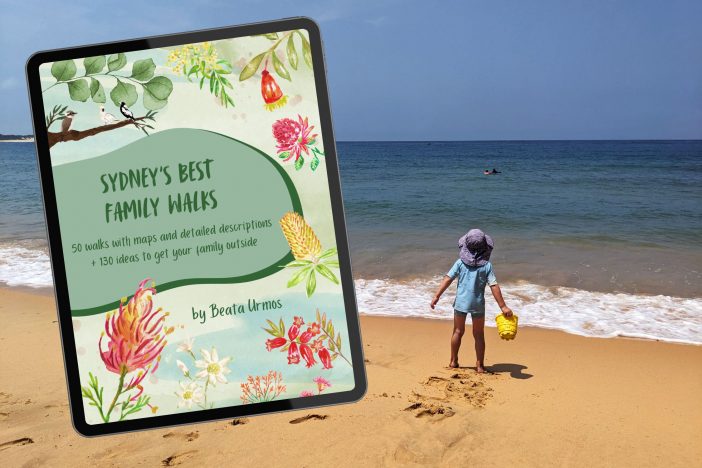
Sydney Family Walks Made Easy!
Get my guide to 50 kid-tested trails with maps, parking, pram info & fun “Play Factor” notes. PLUS: 130+ nature play ideas & printables!
Your guide to camping among kangaroos in NSW
1. Camp Blackman, Warrumbungle National Park
Location: Central West NSW, near Coonabarabran.
This is not a well-known national park (to overseas visitors, at least) and is usually not included in the typical NSW road trip routes. But we had our absolute best kangaroo experience here, seeing hundreds of them every morning and evening! The volcanic mountains and the wonderful, endless night skies of the Warrumbungles are two more reasons to visit.
I know, it’s far from the coast, but it’s exactly why I recommend including it in your NSW road trip: to explore beyond coastal New South Wales!
Why do kangaroos love it here?
Situated in the heart of Warrumbungle National Park, Camp Blackman is surrounded by open eucalypt woodlands and grassy areas (=prime grazing grounds for kangaroos and wallabies). Kangaroos are incredibly common here, often seen grazing peacefully on the oval-like common areas right amongst the tents and caravans. They are quite habituated to human presence (but they won’t let you touch them, and please, don’t feed them either!), allowing for fantastic observation opportunities.
Campground features
Camp Blackman is a large (100+ campsites), well-facilitated campground with brand new amenities blocks, hot showers, flushing toilets, dishwashing sinks, picnic tables and plenty of electric BBQs. After camping in several remote campgrounds across New South Wales, Camp Blackman felt luxurious. Hot water! Drinking water! Access on paved road! But it’s also more busy than those remote campgrounds.
It’s the perfect base for exploring the park’s iconic volcanic peaks and stargazing. Warrumbungle is Australia’s first Dark Sky Park!
Our kangaroo experience
More often than not, it was barely 7 AM, and I was already convinced I’d just experienced the highlight of the day. Here, the early bird isn’t just getting the worm, it’s getting a front-row seat to a live nature documentary! I mean, where else do you get a front-row seat to kangaroo mums meticulously grooming their joeys (at every adorable stage of development, mind you), or watch young male kangaroos engage in their unexpectedly graceful, yet shockingly powerful, boxing matches – balancing entirely on their tails while delivering those impressive kicks?
Kangaroos were often grazing on the very grass among the tents, eyeing us as we prepared our morning coffee. Their curious gazes would follow me on my morning runs, as if silently judging my pace. And one unforgettable morning? A mum decided our tent was the perfect backdrop for her joey’s breakfast. You try staying grumpy after that!
For those who fancy stretching their legs (and increasing their kangaroo-spotting odds!), I highly recommend the easy ~1.5 km Link Track (also known as Gurianawa Track) which conveniently connects Camp Blackman to the visitor centre. If you’re up for a slightly longer adventure, the ~5 km Belougery Flats circuit walk is fantastic – you don’t even need to complete the whole thing to be surrounded by kangaroos (and maybe even a few majestic emus!). As a bonus, it also serves up impressive distant views of the Grand High Tops, Mount Exmouth, and Belougery Split Rock. Both these tracks hug the valley floor, winding through the kind of grassy, open forest terrain that kangaroos absolutely adore, meaning minimal effort for maximum wildlife reward.
Our most common companions here were the beautiful Eastern Grey Kangaroos (hundreds of them!), but we also occasionally spotted Red-necked Wallabies. You need a bit more luck to spot the shy Brush-tailed Rock-Wallabies.
Best time to visit
Late autumn and early spring offer pleasant temperatures for hiking and clear night skies for stargazing. Summer is too hot for active outdoor activities. Winter is too cold for camping (unless you’re equipped for true winter camping in freezing temperatures).
Mid-September was perfect for us, and some of the steep, unshaded trails already felt very sweaty.
Have good quality, responsibly sourced food for the trail
2. Pebbly Beach Campground, Murramarang National Park
Location: NSW South Coast, north of Batemans Bay.
Pebbly Beach. Ah, yes. It’s practically synonymous with “kangaroos on the beach NSW,” and if you’ve done even a quick search, its iconic images have undoubtedly popped up. It’s famous for a reason, brimming with kangaroos who look like they’re living their best coastal lives on the grassy patches behind the sand. And sure, it’s incredibly popular – prepare for crowds if you’re hitting the main attraction.
But here’s a little secret from me to you: while Pebbly is indeed charming, you don’t only see kangaroos there. In fact, you’ll encounter these amazing marsupials grazing on the grasslands behind almost every single beach in Murramarang National Park! That’s right, the park is basically a giant playground for Eastern Grey Kangaroos.
Why do kangaroos love it here?
The cleared grassy area around the campground provides easy grazing access. These kangaroos are iconic and often seen right on the beach or hopping around the campground. They are very accustomed to people, making for incredible photo opportunities, but remember, do not approach or feed them.
Campground features
It’s a scenic, small campground offering tent and caravan sites right behind the famous beach. Facilities include cold showers, flushing toilets and BBQs. You’ll have direct access to the Murramarang South Coast Walk.
Our kangaroo experience
Alright, full disclosure: I totally dropped the ball and was far too late to bag a spot at the famous Pebbly Beach campground. But, plot twist! It turns out this area is absolutely packed with other fantastic campgrounds, and guess what? They also come with their very own resident kangaroo crews (so definitely keep scrolling!).
We still popped over to Pebbly, naturally. And instead of the calm, sunny scene I’d envisioned, a rather magnificent storm decided to roll in. Funnily enough, this was a blessing in disguise, as the crowds (sensibly, I suppose) decided to make themselves scarce. So there we were, watching those iconic kangaroos, completely unbothered, grazing away, with a backdrop of incredible stormy skies and absolutely epic waves crashing onto the shore. It wasn’t the postcard-perfect moment I’d pre-filtered in my mind, but honestly? It was something wilder, more real. Sometimes, Mother Nature just delivers the best surprises.
Best time to visit
Any time of the year could be perfect. Summer is best for (warm) swimming, and winter nights might be too cold for tent camping. In any case, booking well in advance is essential!
3. Pretty Beach Campground, Murramarang National Park
Location: NSW South Coast, within Murramarang National Park, near Pebbly Beach.
Similar to Pebbly Beach, Pretty Beach offers a fantastic coastal habitat that kangaroos love, with grassy areas leading down to the sand. It’s a slightly quieter alternative to its more famous neighbour.
Why do kangaroos love it here?
Regular Eastern Grey Kangaroo sightings on the grassy coastal hillsides are a highlight, particularly in the mornings and evenings as they graze around the campsites. They are wild but generally calm.
Campground features
Larger than the Pebbly Beach campground, it’s also equipped with amenities like hot showers, flushing toilets or powered sites. It’s situated near the beach, offering opportunities for swimming, fishing, or joining the Murramarang South Coast Walk.
Our kangaroo experience
Alright, I know, I know, it seems like I’ve dedicated my life to raving about cute kangaroos. Well, trust me, I’m absolutely not stopping now. But imagine this: you’re standing there, absolutely gobsmacked by a dazzling turquoise bay, stretches of golden sand, and an idyllic, green, hilly coastline… and then, right there in the foreground, are adorable kangaroos, just casually grazing! It’s the kind of scene that makes you want to pinch yourself.
The best part? It wasn’t even “prime kangaroo time” – we rolled in right in the middle of the day, when most self-respecting roos should be napping. We still spotted multiple groups scattered across the grasslands behind Pretty Beach, some even just chilling in the shade under the trees, looking impossibly relaxed. It just goes to show, when you pick the right spot, the kangaroos are pretty much always ready for their close-up.
Best time to visit
Similarly to other regions along the southern coast, summer is excellent for swimming and water activities (bring your snorkeling gear to explore marine life in the rocky sections at either end of Pretty Beach), autumn and spring offer comfortable temperatures for walking or hiking. Winter is great for active outdoor activities, but probably too cold for tent camping.
4. Congo Campground, Eurobodalla National Park
Location: NSW South Coast, near Moruya.
The campgrounds and beaches of Murramarang National Park are famous for Eastern Grey Kangaroos. They’re practically celebrities there. But who on Earth has actually heard of Eurobodalla National Park? Well, let me tell you, the kangaroos certainly have! Located just a hop, skip, and a jump south of Murramarang, this absolute gem offers precisely what a roo’s heart desires: vast, open grasslands, often conveniently located right behind glorious, uncrowded beaches (more appealing to us than to the roos as we take pictures, I suppose).
Why do kangaroos love it here?
Congo Campground is perfectly positioned, right behind a long, sandy beach but beautifully sheltered by coastal dunes and forests. The lush, grassy hillside is, quite frankly, a five-star resort for kangaroos, and we’re just lucky enough to be allowed to pitch our tents nearby.
Campground features
A fantastic campground right where Congo Creek meets the ocean, offering direct creek and beach access. Facilities are basic but functional: toilets, boat ramp, picnic tables. Ideal for surfing, fishing, paddling on the creek, and exploring the park’s wild coastline.
Our kangaroo experience
This park didn’t just meet our wildlife expectations; it absolutely knocked us off our feet. We’re talking the full, dreamy kangaroo encounter here – those serene dusk and dawn sightings right in the campground, and yes, I can confirm the “almost literally bumping into a kangaroo on a late-night toilet run” experience. It’s less graceful than you’d imagine, but surely unforgettable!
But there’s more! Beyond our bouncing neighbours, we spotted playful seals frolicking in the bays and even had dolphins making a splash right offshore. And birdlife along the creek’s mangrove-lined banks is incredibly diverse. Pack your binoculars, because you won’t want to miss a single creature in this wonderful sanctuary!
Best time to visit
Autumn and spring are best for walking and comfortable weather. Summer is best for swimming and water activities. As usual, any time of the year can be great, winters (the ones with real ice and snow) are unheard of here.
5. Smoky Cape Campground, Hat Head National Park
Location: Mid-North Coast, near South West Rocks.
Planning a drive up to Coffs Harbour? Great! Now, let’s talk about where you really need to pull over: Hat Head National Park. This absolute gem is one of those fantastic lesser-known coastal parks in New South Wales that punches way above its weight.
Forget the crowds; here you’ll find pristine, sprawling beaches, genuinely breathtaking coastal views, and lush coastal forests that lead to… well, to amazing wildlife! Expect to encounter surprisingly curious kangaroos, sunbathing monitor lizards, the silent sweep (or noisy bickering) of flying foxes at dusk, and a riot of colourful (and yes, also delightfully noisy) birdlife. It’s the perfect blend of wild beauty and effortless discovery.
Why do kangaroos love it here?
Smokey Cape campground is set within a picturesque forest directly behind South Smoky Beach. The grassy areas among the trees and tents are frequented by kangaroos in the mornings and evenings.
Campground features
Basic campground (toilets only) in a beautiful rainforest setting with easy access to South Smoky Beach. It’s a great base for exploring the iconic Smoky Cape Lighthouse, scenic coastal walks (like the Korogoro walking track), and enjoying the wild, uncrowded beaches.
Our kangaroo experience
Picture this: your alarm clock is the ridiculously cheerful, utterly magical song of magpies. You lazily unzip your tent, peer out, and there they are – kangaroos, grazing among the tents, like it’s the most normal thing in the world. But then, then you notice it. A mum, looking ever so nonchalant, with that tell-tale bulge in her pouch. And just when you think your heart can’t handle any more cuteness, that’s right – a tiny, curious face decides it’s time to take a peek at this wild, wonderful world outside!
This was our first morning at Smoky Cape campground, only to be followed by similarly heartwarming ones.
Best time to visit
Spring for wildflowers, autumn for mild hiking weather, winter for prime whale watching. Oh, summer is fine too, because there’s the ocean to cool you off. However, most beaches are wild and unprotected surfing beaches, not really suitable for swimming.
6. Boyd River Campground, Kanangra-Boyd National Park
Location: Blue Mountains region (Western edge), near Oberon.
Calling all nature-addicted Sydneysiders! You love the Blue Mountains, right? Good. But how about we ditch the popular lookouts and dive into one of its best-kept secrets? I’m talking about Kanangra-Boyd National Park.
Full disclosure: getting here isn’t a freeway cruise. Expect a bit of a drive, and yes, some gravel roads. But consider that your filtering system – because that’s exactly how you leave the crowds (and most signs of civilization, bless their hearts) so far behind they’ll be a distant memory. The reward? Pure, unfiltered wonder: epic canyons, hidden waterfalls, and, naturally, some pretty spectacular wildlife encounters. If you’re ready for true wilderness, minus the human horde, this is your next adventure.
Why do kangaroos love it here?
While not coastal, this park offers extensive open grasslands and woodlands along the Boyd River, which are perfect feeding grounds for large mobs of kangaroos and wallabies, especially at dawn and dusk. They are regularly seen across the open plains of the campground and along the river flats. Being a more remote setting, these kangaroos are generally less habituated to humans than at some coastal parks, offering a very authentic viewing experience.
We saw plenty of Eastern Grey Kangaroos, Red-necked Wallabies (with reddish fur on their neck and shoulders) and the occasional Swamp Wallaby (with darker, coarser fur and a lighter stripe on their cheek). Wallabies are more shy than kangaroos, so keeping your distance is crucial to actually have a proper encounter.
Campground features
Boyd River Campground is a spacious and beautiful bush campground with basic facilities (pit toilets, fire pits). It’s popular for bushwalking and exploring the dramatic wilderness of Kanangra Walls. It requires self-sufficiency, you’ll be far from facilities.
Our kangaroo experience
Here, the kangaroo experience felt a little different – more wild, more profoundly peaceful. We absolutely loved taking quiet strolls around the campground as darkness began to fall, painting the endless bushland in shades of purple and grey. Kangaroos and wallabies would emerge, grazing in small, hushed groups, and the silence? It was so palpable, it felt like you could almost touch it, broken only by our very cautious steps.
a shy wallaby
This is true wilderness, so we definitely kept our distance. These animals are absolutely not accustomed to human presence, and frankly, we preferred it that way. The wallabies, in particular, are incredibly shy here – blink and you’ll miss them as they dart back into the shadows. It’s a humbling reminder that you’re truly a guest in their wild home.
Best time to visit
Spring and autumn offer ideal walking weather. Summer is too hot, and winter can be very cold, often with snow.
7. Spring Gully Campground, Goulburn River National Park
Location: Central West NSW, north of Mudgee.
Finally, a park you likely haven’t ever heard of. And that is precisely its charm! Even though it’s only about a four-hour drive from Sydney, Goulburn River National Park feels like it’s dropped right into the glorious middle of nowhere in rural Australia – miles from cities, far from civilization. You’ll truly earn this one, as it’s reachable only after a decently long, unsealed road you turn onto just after leaving Mudgee. But trust me, the journey is part of the magic. It also includes several creek crossings, so it’s best to drive a high clearance car.
This park’s rugged sandstone landscape is dramatically cut by the winding Goulburn River, carving out plenty of open woodlands and lovely grassy river flats. And guess who absolutely adores these river flats? You guessed it: kangaroos and wallabies!
Why do kangaroos love it here?
The combination of open grazing areas and immediate bush cover is irresistible to kangaroos and wallabies, who are frequent visitors to the campground area, particularly during early morning and late afternoon hours. This bush setting provides the perfect, quiet environment for wildlife observation. It’s also a good escape from the midday sun, so don’t expect to see too many marsupials lounging about during the daytime.
Campground features
Spring Gully Campground is set in a spacious, cleared area along the Goulburn River. It’s a small and remote campground, with minimal facilities (drop toilets) and about 15 spacious, grassy campsites.
Our kangaroo experience
We arrived at this campground after a long day of driving and hiking. As we slowly cruised around in the dark to find that perfect campsite, kangaroos leaped away from our headlights. Then we were pitching our tent under a blanket of truly astonishing stars, illuminated only by tiny headlamps, and being silently (and probably judgmentally) observed by curious groups of kangaroos. Talk about an authentic welcome committee!
From that moment on, it was a constant wildlife show. Every single morning, as we unzipped our tent, we were greeted by dozens of kangaroos, casually grazing in groups all around the campsite, sprawling across the river flats, and dotting the surrounding hillsides. Then, as dusk painted the sky and we started prepping our own dinner, they’d begin gathering for their evening meal, too. And yes, we were treated to some seriously intense fights between dominant males – think full-on, powerful, two-legged boxing matches.
While Goulburn River National Park offers some lovely bushwalks and sandstone rock formations, the absolute highlight for us was simply being there. Camping at this remote, riverside spot, enveloped by the pure sounds of nature, surrounded by what felt like an endless number of kangaroos, curious wallabies, and even a few majestic emus, plus that lively chorus of noisy birds? It was pure magic. Oh, and the night skies? They were so utterly, breathtakingly stunning, they deserved their own standing ovation!
Best time to visit
Autumn and spring have the most pleasant temperatures. Avoid summer if you don’t like heat, and don’t expect to have a beach holiday by Goulburn River as it’s a shallow, swampy river.
+1: Green Patch campground, Booderee National Park
Location: Jervis Bay Territory (yes, it’s not technically NSW, but it’s so close and so utterly fantastic, we simply couldn’t leave it out!).
Stunning Booderee National Park is the most untouched part of Jervis Bay, with pristine white sand beaches (regularly visited by dolphins), lush green bushland and adorable (often noisy) wildlife.
Why do kangaroos love it here?
The expansive grassy areas around the campground are irresistible to grazing kangaroos. They are famously accustomed to human presence here, and while this offers incredible photo opportunities and a truly immersive experience, remember: these are still wild animals. Do not feed them!
Campground features
Green Patch is extremely popular any time of the year. The campsites are quite small, but you do have direct access to eucalypt forests and calm bay waters, and constant marsupial neighbours are almost guaranteed.
Facilities are excellent, including hot showers, flushing toilets, and easy access to the beautiful waters of Jervis Bay. Perfect for swimming, snorkeling (the water clarity is insane), kayaking, and paddleboarding. There are also walking tracks leading to other stunning beaches and lookouts within Booderee National Park.
Our kangaroo experience
Oh, Green Patch! We booked a single night here years ago when we were just wide-eyed visitors to Australia, and we’ve been dreaming of camping here again ever since we finally settled in Sydney. The postcard-perfect white sand beaches and the absolutely incredible marine life are so stunning, they probably deserve an entire blog post all to themselves (well, here’s one that suffices).
But even with all that dazzling beauty, the incredibly curious kangaroos and wallabies are still among the most tempting attractions here, and rightly so. They quietly observe you rummaging through your luggage, meticulously pitching your tent, or simply trying to figure out where you left the sunscreen, acting less like wild animals and more like your very attentive, furry neighbours.
Best time to visit
Spring and autumn offer ideal temperatures. Summer is popular for swimming but can be crowded. Winter is great for whale watching from nearby headlands and quieter camping.
My favorite resources to make your travel planning easier and more affordable:
- Booking.com: book rooms, apartments, hostels or hotels for your stay.
- Hipcamp: book a campsite or cabin in a private campground or caravan park.
- DiscoverCars: compare rental car prices to find the best deal.
- Airalo: get an eSIM (digital SIM cards) that you can buy before you even land in Australia. It solves the pain of high roaming bills, and you don’t need to fuss about looking for a SIM card at the airport.
My best tips for your kangaroo-focused camping trip
Timing is crucial. Kangaroos are most active during dawn and dusk when temperatures are cooler. This is your prime viewing window.
Patience is key. Wildlife viewing requires patience and quiet observation. Settle down, be still, and let the animals come to you (within a safe distance).
Don’t forget binoculars for close-up views. They can also enhance your bird, whale or dolphin watching experience.
Don’t forget about wallabies, too! While this post focuses on kangaroos, many of these parks are also home to various species of wallabies. And before you even think it, let me stop you right there: no, they are not just mini-kangaroos, despite what countless first-time visitors understandably assume (hello, we’ve been there, too). They’re a completely distinct species of marsupial, perfectly adapted to their own bush niches. Honestly, Australia is a veritable buffet of unique marsupials, and if I dive into all of them now, we might never get to your actual camping trip! Just keep an eye out; a wallaby sighting is always a delightful bonus.
So… pack your tent and go!
There’s a profound magic in sharing a natural space with wild kangaroos, hearing them rustle through the grass, and watching their powerful, graceful movements. For truly immersive Australian encounters, these campgrounds offer some of the best opportunities in New South Wales, and I can vouch for that personally.
My favorite camping gear
A reliable, quick‑setup gear makes all the difference. Here’s what has worked best for us after many weekends camping in the Aussie wilderness:
- Dome tent with vestibule – tough enough for coastal wind and mountain drizzle, with room for boots and packs outside
- Self‑inflating sleeping mat – essential for comfort and warmth when the ground gets cold overnight
- Lightweight camp stove – to have your coffee, ham and eggs even on camp days
- Rechargeable LED lantern – bright enough for camp kitchen duty yet gentle enough for inside the tent at bedtime
- Compact cookware set – this basic set comes with a stove
- Foldable camp chair – who needs a reason for them? 🙂
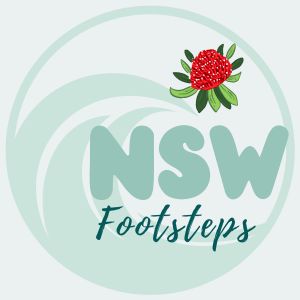
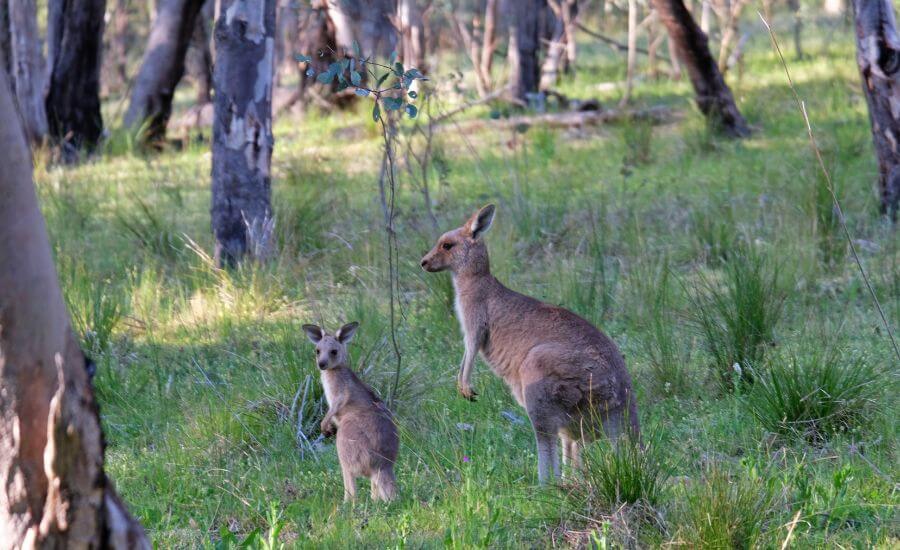






































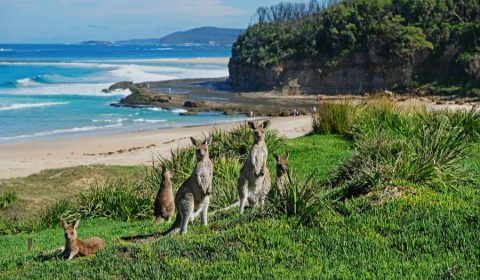
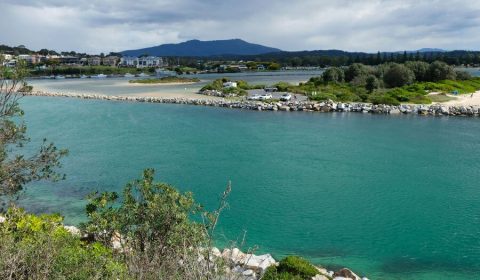
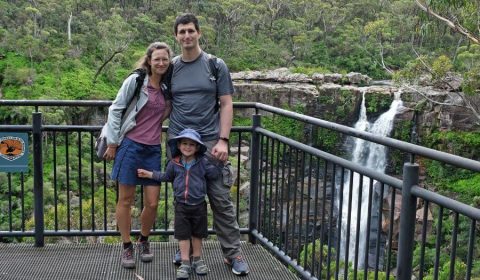
Leave a Reply